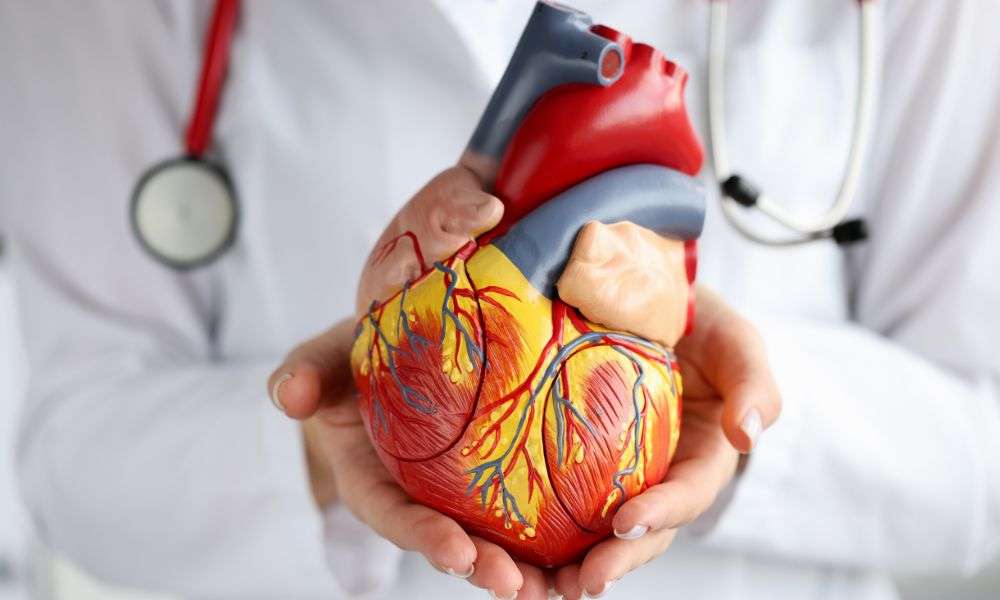Understanding Amyloidosis: Symptoms, Risks, and Treatment Options
Amyloidosis is a rare but serious condition characterized by the buildup of an abnormal protein called amyloid in organs and tissues throughout the body. This protein accumulation can impair normal organ function and lead to serious complications if left untreated. While amyloidosis remains challenging to diagnose due to its diverse and often vague symptoms, advances in treatment have significantly improved outcomes for patients in recent years. Understanding this complex condition is crucial for early detection and effective management.

What is Amyloidosis?
Amyloidosis occurs when abnormal proteins called amyloids fold improperly and form deposits in tissues and organs. Unlike normal proteins that dissolve in water, amyloid proteins stick together and create fibrils that accumulate in various parts of the body. There are several types of amyloidosis, with the most common being AL (primary) amyloidosis, AA (secondary) amyloidosis, and ATTR (hereditary and wild-type) amyloidosis. Each type involves different precursor proteins and typically affects different organs. In AL amyloidosis, the bone marrow produces abnormal antibody proteins. AA amyloidosis usually develops as a result of chronic inflammatory conditions. ATTR amyloidosis can be either inherited or age-related (wild-type) and often affects the heart and nervous system.
The Elusive Symptoms
Amyloidosis presents a diagnostic challenge because its symptoms often mimic those of more common conditions. The manifestations largely depend on which organs are affected by amyloid deposits. Heart involvement may cause shortness of breath, irregular heartbeat, and swelling in the legs and ankles. Kidney involvement frequently leads to protein in urine, swelling, and eventual kidney failure. Neurological symptoms can include numbness or tingling in extremities, dizziness upon standing, and carpal tunnel syndrome. Gastrointestinal effects might include diarrhea, constipation, or feeling full quickly after eating. Skin manifestations sometimes appear as easy bruising, purplish patches around the eyes, or thickened skin. The varied and nonspecific nature of these symptoms often leads to delayed diagnosis, with patients seeing multiple specialists before receiving a correct diagnosis.
Who Is at Risk?
While amyloidosis can affect anyone, certain factors increase susceptibility to specific types. Age is a significant factor, with most cases diagnosed in people over 50, particularly for AL and wild-type ATTR amyloidosis. Men face a higher risk for certain types, especially wild-type ATTR amyloidosis. Family history plays a crucial role in hereditary forms of the disease, particularly with hereditary ATTR amyloidosis, which follows an autosomal dominant inheritance pattern. Those with specific chronic conditions face elevated risk for secondary (AA) amyloidosis, including rheumatoid arthritis, inflammatory bowel disease, and chronic infections. People with multiple myeloma or other plasma cell disorders have increased susceptibility to AL amyloidosis. Certain ethnic backgrounds may also influence risk, with some hereditary forms appearing more frequently in specific populations, such as individuals of Portuguese, Swedish, or Japanese descent for certain types of hereditary ATTR amyloidosis.
Why Early Detection is Critical
Early diagnosis of amyloidosis significantly improves treatment outcomes and quality of life. When detected early, treatments can often slow or halt disease progression before irreversible organ damage occurs. The progressive nature of amyloidosis means that without intervention, affected organs will sustain increasing damage over time. Early detection enables patients to begin treatment when they’re generally healthier and better able to tolerate therapeutic interventions. Modern diagnostic tools have improved significantly, including specialized imaging techniques like cardiac MRI with gadolinium enhancement, nuclear medicine scans with bone tracers, and more accessible genetic testing for hereditary forms. Heightened awareness among healthcare providers about this rare disease has contributed to earlier recognition of subtle symptom patterns.
Treatment Approaches for Amyloidosis
Treatment strategies for amyloidosis vary based on the specific type and organs involved. For AL amyloidosis, the primary approach targets the abnormal plasma cells producing the problematic proteins. Chemotherapy regimens similar to those used for multiple myeloma are common, often including proteasome inhibitors like bortezomib, immunomodulatory drugs such as lenalidomide, or alkylating agents. High-dose chemotherapy followed by autologous stem cell transplantation may be recommended for eligible patients with AL amyloidosis.
For ATTR amyloidosis, specific medications can stabilize the transthyretin protein (tafamidis, diflunisal) or silence the gene’s expression (patisiran, inotersen). AA amyloidosis treatment primarily focuses on controlling the underlying inflammatory condition using anti-inflammatory medications, immunosuppressants, or biologics. Supportive care to manage organ-specific symptoms remains essential across all amyloidosis types, including medications for heart failure, dialysis for kidney dysfunction, or nutritional support for gastrointestinal issues.
In severe cases with significant organ damage, organ transplantation might be considered, particularly for the liver in certain hereditary forms of ATTR amyloidosis. Clinical trials continue to investigate promising new approaches like monoclonal antibodies designed to clear existing amyloid deposits and gene therapy techniques.
This article is for informational purposes only and should not be considered medical advice. Please consult a qualified healthcare professional for personalized guidance and treatment.
Living with Amyloidosis
Living with amyloidosis requires comprehensive management strategies beyond medical treatments. Regular monitoring through blood tests, imaging studies, and functional assessments helps track disease progression and treatment effectiveness. Many patients benefit from multidisciplinary care teams including hematologists, cardiologists, nephrologists, neurologists, and other specialists depending on the organs affected. Support groups specifically for amyloidosis patients can provide valuable emotional support and practical advice for navigating this rare disease. Nutritional considerations are important, particularly for those with gastrointestinal or kidney involvement, often requiring consultation with dietitians for personalized dietary plans.
Physical activity, appropriately modified based on individual capabilities and symptoms, can help maintain strength and independence. Energy conservation techniques become essential for managing fatigue, a common symptom across amyloidosis types. Mental health support through counseling or psychological services helps patients cope with the emotional burden of living with a chronic condition. Patient advocacy organizations like the Amyloidosis Foundation and Amyloidosis Support Groups provide resources, education, and community connections to help individuals navigate their diagnosis and treatment journey.




